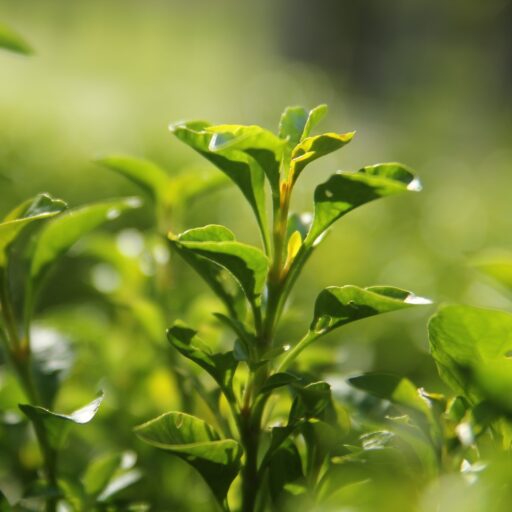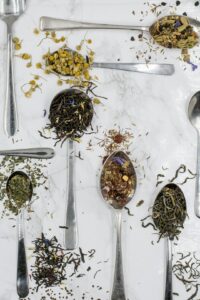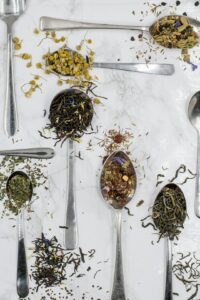Support our educational content for free when you purchase through links on our site. Learn more
Can You Really Grow Tea at Home in 2023?
If you're a tea enthusiast, you've probably wondered at some point whether it's possible to grow tea at home. The good news is, you can! Growing tea at home is a fun and rewarding experience that allows you to enjoy the freshest and most flavorful tea possible. In this article, our team at Growing Teas™ will guide you through everything you need to know about growing tea at home, from planting to harvesting and beyond.
Benefits of Growing Tea at Home
Before we dive into how to grow tea at home, let's take a look at some of the benefits of doing so:
- Fresher tea: When you grow your own tea, you can enjoy the freshest possible tea right in your own home.
- Greater variety: There are countless varieties of tea plants available, so you can experiment with different flavors and types of tea.
- More sustainable: Growing your own tea at home can help reduce carbon footprint and support a more sustainable lifestyle.
- Exercise: Gardening is a form of physical activity that can help improve your overall health and fitness.
- Cost-effective: Growing tea at home can save money compared to buying tea in stores.
How to Grow Tea at Home
Now let's dive into the steps of how to grow tea at home:
Step 1: Choose the Right Variety of Tea
Before you start growing tea, you'll need to decide which variety of tea you want to grow. There are three main types of tea: black, green, and oolong. Each type of tea has different growing requirements, so it's important to choose the right variety for your climate and growing conditions.
Step 2: Planting the Tea
Once you've selected the type of tea you want to grow, it's time to plant. Tea plants need well-draining soil and a warm, sunny location with partial shade. Make sure to plant your tea in the right season and climate for the variety of tea you’re growing.
Step 3: Caring for the Tea
Like any plant, tea plants need regular care and attention to thrive. Keep the plant well-watered and apply fertilizer regularly. Make sure to protect the plant from pests and diseases, and prune it regularly to promote growth.
Step 4: Harvesting the Tea
When the tea leaves are mature, it's time to harvest them. The time of year when tea plants are ready to be harvested varies depending on the type of tea. For example, green tea is typically harvested in the spring, while black tea is harvested in the summer.
Things to Consider Before Growing Tea at Home
While growing tea at home can be a rewarding experience, there are a few things you should consider before getting started:
- Climate: Tea plants require a specific climate to thrive, so you'll need to make sure that your growing conditions are suitable.
- Time and effort: Growing tea takes time and effort, so make sure you have the time and energy to commit to it.
- Space: Tea plants can grow quite large, so make sure you have enough space to accommodate the plant and its root system.
Frequently Asked Questions
Can you grow tea in the US?
Yes, tea can be grown in the US. Tea can be grown in warmer areas such as Hawaii, Florida, and parts of California. The Camellia sinensis, the plant from which tea is made, is someone sensitive to frost and cold weather, so warmer climates are better suited for tea growing.
Is growing tea difficult?
Growing tea can take effort and time, but it is possible to grow tea at home. With the right climate, soil, and care, you can successfully and easily grow tea plants.
What states can you grow tea?
Tea can be grown in warmer areas like Hawaii, Florida, and parts of California. If you live in a colder climate, tea can be grown indoors in a greenhouse or container garden.
Quick Tips and Facts
- Tea plants are native to China, where tea was first cultivated over 4,000 years ago.
- It takes 2,000 small leaves to make just one pound of tea.
- The flavor and quality of tea is affected by where and how it’s grown
- Rooibos tea, or "red bush" tea, comes from a plant native to South Africa and is not related to Camellia sinensis.
In conclusion, yes, you can grow tea at home! With the right climate, soil, and care, anyone can successfully grow their own tea plant. While it takes time and effort, the rewards are worth it. By growing your own tea, you can enjoy the freshest and most flavorful tea possible, all while reducing your carbon footprint and supporting a more sustainable lifestyle. So why not give it a try in 2023?







